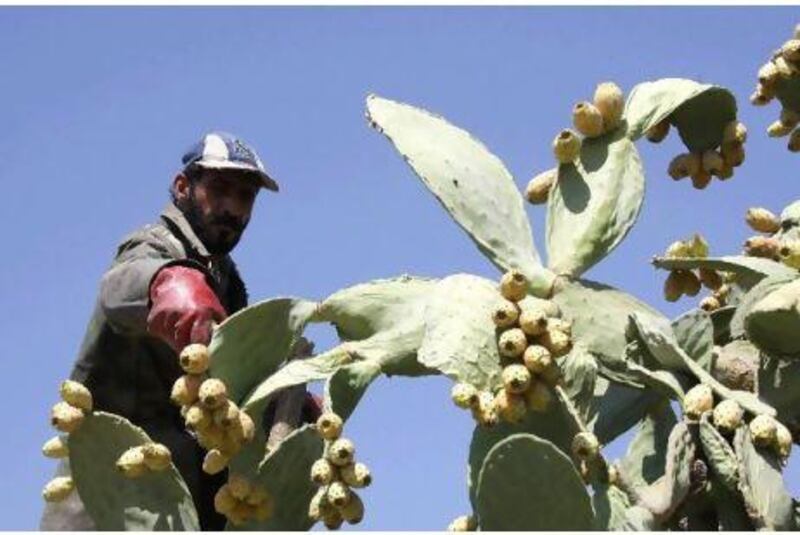The prickly pear cactus will soon be grown on UAE farms as a water-efficient food for animals.
Known as Optunia, the cactus was historically used to collect red dye.
The species is native to the desert, grows with little water and is a good source of nutrients.
It originates from central Mexico but is grown throughout the Americas, Europe and Africa.
During the past three decades, researchers have been putting the plant to use as a source of nutritious animal food throughout Africa and the Middle East. The practice started in Tunisia using cacti planted by the French in the 1940s.
Tunisia has 6,000 sq km of the cacti, of an estimated 50,000 sq km that grows globally. The branches are used to feed livestock during times of drought, with the side benefit that their roots help slow soil erosion and prevent the land becoming desert.
Now the International Centre for Agricultural Research in the Dry Areas (Icarda) has high hopes that the plant can flourish in the Gulf.
"Animals can eat the beds, and the fruits are very expensive in the UAE [at supermarkets], and highly nutritious," said Ahmed Moustafa, the head of Icarda's Arabian Peninsula operations.
Icarda first imported the plant to the region in 2004, growing it in nurseries in Oman, the UAE, Saudi Arabia, Kuwait, Yemen and Qatar.
The centre is now ready to transfer the cacti from a research station in Dibba to pilot growers in the UAE.
About 80 farmers would be selected for the project, though Mr Moustafa added that they expected eventually to plant the cacti on 800 farms.
The crops could be a useful way of reducing water waste in a country with some of the highest per-capita water usage in the world. Of the 550 litres of water used per person per day in Abu Dhabi, about four-fifths is used for agriculture.
Farmers are already looking for new sources of animal feed after the Abu Dhabi Food Control Authority ended subsidies for Rhodes grass, a thirsty plant that accounts for almost two-thirds of the water used in agriculture in the UAE.
"It's another feed supplement," said Mr Moustafa. "It's not a main source of feed to rely on, but something else that grows well with little water and can provide forage and fruits."
Work is also going on elsewhere including India. In Rajasthan, Icarda is busy identifying which of Optunia's 1,600 species will survive drought and salinity to bear fruit.
Scientists are also finding new medical uses, said Ali Nefzaoui, a livestock scientist with Icarda. The cactus contains fibre and pectin, chemicals that stop the intestines absorbing sugar, which means it can be used to control type 2 diabetes, obesity, high cholesterol and diarrhoea, as well as for viral infections.
In Mexico, the cacti have long been prized for the insects that often live on them, which are used to make a red dye called cochineal. The cacti that are being used in the UAE are being shipped free of insects. Native Americans traditionally used the cactus pear as an anti-diabetic and anti-inflammatory and the Aztecs referred to it as "nohpalli".
The US health food industry seems to be branding it as the latest superfood because it is low in calories, fat and cholesterol and rich in minerals, vitamins and antioxidants.
Previously, the plant was only carried by Mexican supermarkets, but speciality shops are starting to stock up. Its uses seem boundless, according to Mr Nefzaoui.
"It can capture CO2, combat desertification and erosion. Now industries are using it to produce jam and oil," he added.






